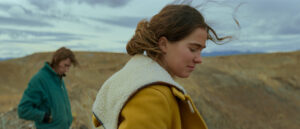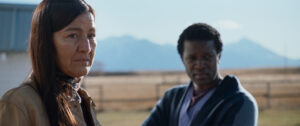Film Review: The Visual Splendor of “Montana Story” Fails to Compensate for Empty Interior
Written by: Hannah Tran | May 24th, 2022

Montana Story (Scott McGehee/David Siegel, 2022) 2 out of 4 stars.
The world outside and the world within constantly collide in Montana Story, the latest effort by writing-directing duo Scott McGehee and David Siegel (What Maisie Knew). If nothing else, Montana Story is able to glorify the natural perfection of the sweeping American landscapes of its setting. Amid these grand backdrops is a humble story about family trauma as half-siblings Erin and Cal are forced to come to terms with the death of their father, a man who violently abused Erin to the point that she abandoned her home state years ago. The good intentions of the filmmakers seep through the screen and the story is filled with moments of genuine poignancy. Between these moments, however, Montana Story is often too meandering and symbolic to truly hold emotional weight.
One can easily imagine where Montana Story might find its place in the history of Western, neo-Western, or, at the very least, American cinema. However, its stylistic parameters only highlight its missing unique vision. There is nothing wrong with the film’s lack of interest in originality or its inclination toward subtlety. Nevertheless, the story that is meant to compensate for these qualities lacks the necessary strength. The creative choices never feel glaringly wrong but they also never feel particularly right. Mostly, the approach seems overly safe. The constant metaphors within the story are not very nuanced, but the sweet motivation behind them largely excuses this.

On an ideas level, Montana Story is made of smart and simple emotion. On a more micro-scale, though, this emotion gets lost in the half-baked characters and an inconsistent vision. While lead actors Haley Lu Richardson (Columbus) and Owen Teague (I See You) give it their all, their performances are hindered by overly direct and unnatural dialogue. The totally jarring handful of moments in which the characters awkwardly insert various product placements only makes this issue worse. Really, how can anyone expect to take the supposed subtlety of a story seriously while the lead character is yelling about how it’s impossible to get cell service unless you have Verizon?
Although there is a particular type of enjoyment to be found in Montana Story’s strange turns. It may often feel repetitive and certainly overstays its welcome, but the filmmakers’ interest in Americana, trauma, and family appears abundantly genuine. And if they were only able to harness that interest to be more curious about the dark parts of these experiences, Montana Story would be able to match its aesthetic with substance. Instead, it relies too heavily on dialogue to serve as exposition, and it never quite delivers the satisfaction of catharsis or acceptance that it so desperately needs.


